Riding your electric bike in the rain is safe and feasible when you follow key precautions like slowing down, braking gently, avoiding deep water, and wearing proper rain gear. Models like the TST EBike 26-inch and 27-inch, designed with durable tires and reliable brakes, can handle wet conditions effectively, ensuring your urban commute or adventure remains safe and enjoyable.
What Pre-Ride Checks Should You Perform Before Riding in the Rain?
Before riding your electric bike in the rain, inspect crucial components such as brakes, tires, and battery housing to ensure they are in good condition and properly sealed. Check tire pressure and tread for optimal grip. Confirm that all electrical connections are dry and secure. These steps help prevent malfunctions and enhance safety on slippery roads.
How Should You Adjust Your Riding Speed and Braking in Wet Conditions?
Reduce your speed significantly to allow more reaction time and avoid hydroplaning. Brake gently and progressively to prevent wheel lockup and skidding, especially on wet or painted surfaces. Use both front and rear brakes simultaneously for balanced stopping power. Anticipate stops early and avoid sudden braking maneuvers.
Which Road Hazards Are Most Dangerous When Riding an Ebike in the Rain?
Slippery surfaces such as tram tracks, manhole covers, painted road markings, and wet leaves pose high risks of slipping. Puddles and standing water can hide potholes or debris that may cause accidents. Avoid these hazards by choosing routes with good drainage and stable surfaces, and by riding in a straight line without sudden turns.
Chart: Common Rainy Day Hazards and How to Avoid Them
| Hazard | Risk Level | Avoidance Strategy |
|---|---|---|
| Painted road markings | High | Avoid crossing or slow down when crossing |
| Manhole covers | High | Ride around or slow down significantly |
| Puddles | Medium | Avoid deep water, test depth if necessary |
| Wet leaves | Medium | Slow down, avoid sharp turns |
Why Is Proper Rain Gear Important for Ebike Riders?
Wearing waterproof jackets, pants, and gloves keeps you dry and warm, reducing discomfort and distraction. High-visibility rain gear improves your visibility to motorists in low-light, rainy conditions. Avoid using umbrellas while riding to maintain control and safety.
How Should You Protect Your Ebike from Rain Damage?
Avoid submerging your electric bike or exposing it to heavy rain for extended periods. Remove and store the battery indoors when not in use. Use waterproof covers or park under shelter. After riding, dry your bike and inspect electrical components before charging or storing.
Which TST EBike Models Are Best Suited for Rainy Weather Riding?
TST e-bike models like the Defender 26 and Ranger 27.5 excel in rainy weather due to their water-resistant components and durable frame designs. These bikes feature sealed motors and batteries that withstand moisture. Their wide, treaded tires provide excellent traction on wet surfaces, enhancing safety. Additionally, integrated fenders on some models help keep riders dry, making them ideal choices for reliable performance during wet and unpredictable weather conditions.
| Model | Wheel Size | Terrain Suitability | Key Features |
|---|---|---|---|
| TST EBike 26-inch Model | 26-inch | Rough terrains like snow and sand | Fat tires, hydraulic disc brakes, durable frame |
| TST EBike 27-inch Model | 27-inch | Daily commuting and mountain biking | Mechanical disc brakes, balanced ride |
Both models feature robust tires and reliable braking systems that perform well in wet conditions, providing stability and safety for rainy day rides.
What Maintenance Steps Should You Take After Riding in the Rain?
Clean and dry your ebike thoroughly, paying special attention to the chain, brakes, and electrical components. Lubricate the chain to prevent rust. Check brake performance and tire condition regularly. Store the bike in a dry place to avoid moisture damage.
Buying Tips for Rain-Ready Ebike Gear and Models
- Choose Reliable Brakes: Hydraulic or mechanical disc brakes, like those on TST EBike models, offer better wet-weather stopping power.
- Select Durable Tires: Fat or treaded tires improve grip on wet surfaces.
- Invest in Waterproof Accessories: Fenders, covers, and waterproof bags protect you and your bike.
- Wear Proper Rain Gear: Waterproof clothing and high-visibility elements enhance comfort and safety.
- Maintain Your Bike Regularly: Keep your ebike clean and serviced to withstand rainy conditions.
How to ride an electric bike in the rain?
Ride cautiously by reducing speed, avoiding sudden braking or sharp turns, and increasing stopping distance on slick roads. Use bright lights and wear reflective gear to improve visibility. Ensure tires have good tread for grip and consider fenders to minimize spray. Plan safer routes with fewer hazards. Models like the TST EBike handle moderate rain well when ridden responsibly.
Is it okay to leave my electric bike in the rain?
It’s best to avoid leaving your e-bike in the rain for long periods. While most e-bikes are water-resistant—not waterproof—prolonged exposure can risk water ingress into sensitive parts. Store the bike in a sheltered place or use a waterproof cover to protect electrical components and prolong lifespan.
How do I protect my eBike battery from rain?
Remove the battery when possible during wet rides and store it indoors after use. Ensure charging ports and connectors are sealed or covered. Avoid riding through deep water that could submerge the battery. Use waterproof battery covers and dry the battery thoroughly if it gets wet to prevent damage.
Can I hose down my electric bike?
You can gently rinse or hose down an e-bike using low-pressure water, avoiding direct sprays on electrical components, charging ports, and the motor. Do not use high-pressure washers. After washing, dry the e-bike thoroughly and inspect seals to maintain water resistance.
What Is The Best Electric Bike Rain Cover To Use?
The best rain covers are waterproof, durable, and designed to protect the battery, motor, and display. Look for covers with secure fastenings and transparent panels for visibility. Covers suited for models like the TST EBike offer effective protection against rain and splashes.
Why Is My E-Bike Not Working After Rain?
Water intrusion in critical areas like the battery, controller, or motor connections can cause malfunctions. Riding through deep water or submerging parts may damage electronics. Allow the bike to dry completely before use. Check and reseal connectors or seek professional service if problems persist.
Can E+ Bikes Get Wet In The Rain Safely?
Yes, e-bikes with sealed motors and batteries can handle light to moderate rain safely. Avoid deep water crossings or submerging the bike. Always dry and maintain components after wet rides to preserve water resistance and functionality.
Can You Ride An Electric Bike In The Snow?
Riding an e-bike in snow is possible with fat or studded tires, reduced tire pressure, and careful handling. Snow increases slipping risks, so ride slowly and prepare for reduced battery range due to cold temperatures.
Can You Ride Electric Bikes On The Road Legally?
Electric bikes are legal on most public roads if they meet local regulations, including power and speed limits. Verify your area’s laws, as some restrict throttle use or maximum speeds. Models like TST EBike comply with many regional standards.
Are Electric Bikes Waterproof?
Most e-bikes are water-resistant, not fully waterproof. They can handle rain and splashes but should not be submerged. Water-resistant ratings vary by brand and model, so avoid riding in floods or heavy water exposure.
Can Electric Bikes Be Stored Outside Safely?
Storing e-bikes outside is not ideal as prolonged exposure to rain, moisture, and temperature extremes may harm electronics and degrade performance. Use waterproof covers or a sheltered area. Remove batteries for indoor storage to prolong life.
What Is The Best Waterproof Electric Bike Available?
The best waterproof e-bikes feature motors and batteries with high IP ratings (IP65 or above), sealed wiring, and robust frames. Brands like TST EBike offer models designed for wet climates, combining weather resistance with performance and durability.
As September arrives, the scorching sensation from the summer sun fades, and the sudden downpours of rain become less frequent—summer is officially over. In its place comes the crisp, refreshing autumn air. However, due to the monsoon season, rain showers are still frequent.
Imagine it is a Friday afternoon and you’re having lunch with your friends at La Taqueria on Mission Street in San Francisco. The fog is just beginning to lift, letting in some warm autumn sunlight as your TST electric bike is locked up nearby.
Just as your carne asada burrito and chips with guacamole arrive at the table, the weather turns, and a light drizzle starts to fall. The soft patter of rain against the window sets a cozy mood. After lunch, with the gentle rain continuing, you have to consider if it is OK to ride in the rain with your e-bike.
Rain isn’t going to stop you. This is especially true if you have taken time to prepare your electric bike, yourself, and your gear for rainy rides before clouds appear.
Can you ride an ebike in the rain?
Yes, most e-bikes are water-resistant and can handle light to moderate rain. However, avoid riding through deep water that could submerge the motor or battery, as this can cause damage. Always check your e-bike's IP rating to understand its water resistance level.
First things first: Yes you can use an electric bike while it’s raining. The International Electrotechnical Commission defines the Ingress Protection code (“IP rating”), regarding the degree of protection electronic devices have against water, dust, and accidental contact. Most electric bikes have an IP rating of 65. This means that you are fully protected against dust and solid objects. And as far as the water tightness, you are protected against jets of water, which is why you are fine to wash your bike with a hose. And you are also protected when riding through a shallow stream.
Riding in the rain, however, does require a few more things to consider than fair-weather rides, which we’ll cover here. Do this and you should be able to avoid getting cold, wet, chaffed, or worst of all broken.
1. Use Fenders
Installing fenders on your e-bike helps prevent water and mud from splashing onto you and your bike's components, keeping both cleaner and reducing the risk of corrosion.
Fenders play a crucial role, especially in the rain. While electric bikes are largely waterproof—the drivetrain and motor can withstand heavy splashes, and the battery won’t fail from getting wet—adding fenders helps reduce the likelihood of mud and debris entering the internal components. As an added benefit, fenders also help keep your pants clean and dry. Cold liquid can become quite heavy and start drawing heat away from your body.
2. Wind and Rain Protection Gear
There’s a Scandinavian saying: “There’s no such thing as bad weather, only bad clothing (or gear!).” The basics are that you need to stay warm and dry. Try wearing a rain jacket with nylon cuffs to keep a waterproof seal around your wrists. Rain pants are also essential; it’s best to wear them in a larger size so they don’t ride up and let water spill into your ankles when you’re pedaling. However, don’t go too oversized, as there’s a risk of the fabric getting caught in the drivetrain.
One of the most important items you can wear is a bicycle helmet. A brim will keep the rain out of your eyes, so you can still see where you’re going. Next, you’ll need gloves. Look for high-quality waterproof gloves to keep your hands warm and dry. If possible, a pair of waterproof shoes will keep your ride comfortable.
3. Seeing and Being Seen
Rain can reduce visibility. Equip your e-bike with front and rear lights, and wear reflective clothing to ensure you're visible to others. Clear or yellow-tinted glasses can help improve your vision in low-light conditions.
Each traveler is also dealing with the challenges of driving, riding, or otherwise getting around in the rain. Among these challenges is visibility and having lights will help. Make sure you check that they’re both clean, functional, visible, and secure before each ride. To maximize your safety, consider applying additional reflective items to your ebike. To further enhance your safety, consider adding extra reflective items to your electric bike.
Wearing bright, attention-grabbing clothing, such as a fluorescent jacket or a bright helmet, can also help make you more noticeable. Drivers naturally notice movement on the road, and when you pedal, your legs move. With this in mind, having reflective material on your lower half gives you a better chance of standing out.
4. Adjust Your Riding Style
Wet conditions can affect traction and braking. Ride at a slower pace, brake earlier and gently, and avoid sharp turns to maintain control and prevent slipping.
It might be the cool droplets on your skin, or perhaps you instinctively understand that riding harder and faster will actually make you warmer. In any case, you should avoid riding too fast in the rain. Wet roads and reduced visibility mean you might not have enough time to react. Especially when turning, slowing down can help you avoid excessive leaning, allowing your tires to maintain better contact with the ground and ensuring sufficient traction.
In addition to reducing your speed, you should also allow more time for braking when riding in the rain. Braking early enables you to slow down gradually, maintaining traction throughout the process. Delaying braking on slippery surfaces can lead to skidding and potentially losing control of the bike. Be especially cautious of known hazard areas, such as metal manhole covers in the middle of the road, metal grates at the roadside, and painted lines at intersections. These can become very slippery in the rain and may cause a collision before you have a chance to react.
5. Avoid Submerging the Motor and Battery
Never ride through water deep enough to submerge your e-bike's motor or battery. Water ingress can damage electrical components and lead to costly repairs.
Do not ride through water that will submerge your motor and battery. Your battery in particular is susceptible to shorting out if submerged for any length of time. Something to be avoided :). Like any vehicle though, avoid riding through flooded water if you can, particularly fast-moving water.
We also recommend that you don’t leave your ebike outside in the weather for any length of time. This includes storing it in a dry place at home.
6. Cleaning After Riding in the Rain
After riding in wet conditions, wipe down your e-bike to remove moisture and debris. Pay special attention to the chain and electrical components to prevent rust and corrosion. Allow the bike to dry completely before storing or charging.
If your bike hasn’t gotten dirty, you might not need to clean it after riding in the rain, but you should wipe off any excess moisture.
If your e-bike does get dirty during the ride, say you ran through a muddy section, we suggests cleaning off parts that move such as the chain and brakes. However, the first rule of bike maintenance in wet weather is not cleaning the bike, but rather keeping the chain lubricated. Whether you purchase a budget brand or a high-quality version, bike chain lube is essential to keeping your bike parts running smoothly so it should be applied after riding in the rain or after washing your bike.
Conclusion
Rain shouldn’t stop you from riding. As long as you are prepared, wear the right gear, and adjust your riding style, you can still enjoy riding an e-bike in the rain.
Want to ride rain or shine? Click here to learn more about our TST e-bikes.

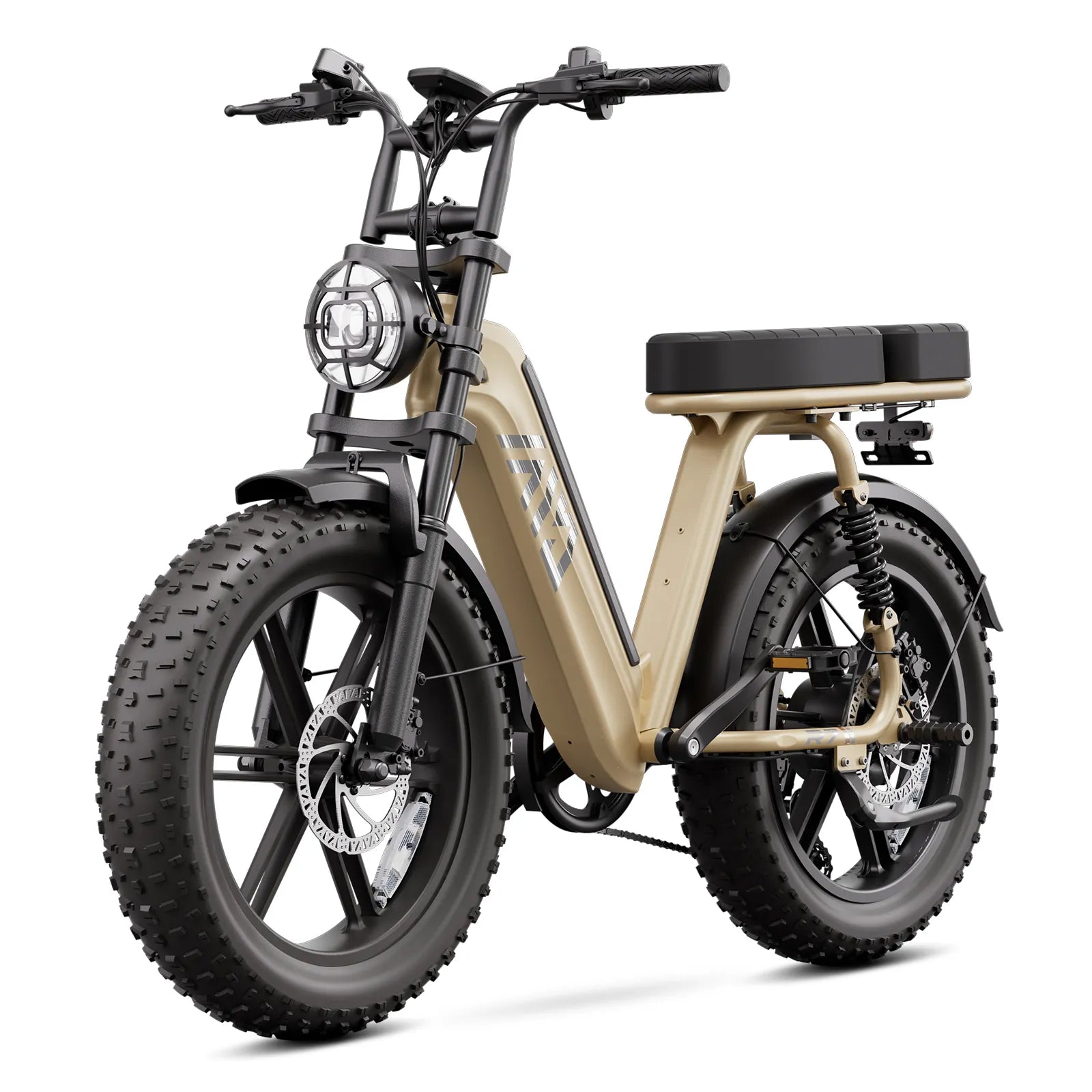
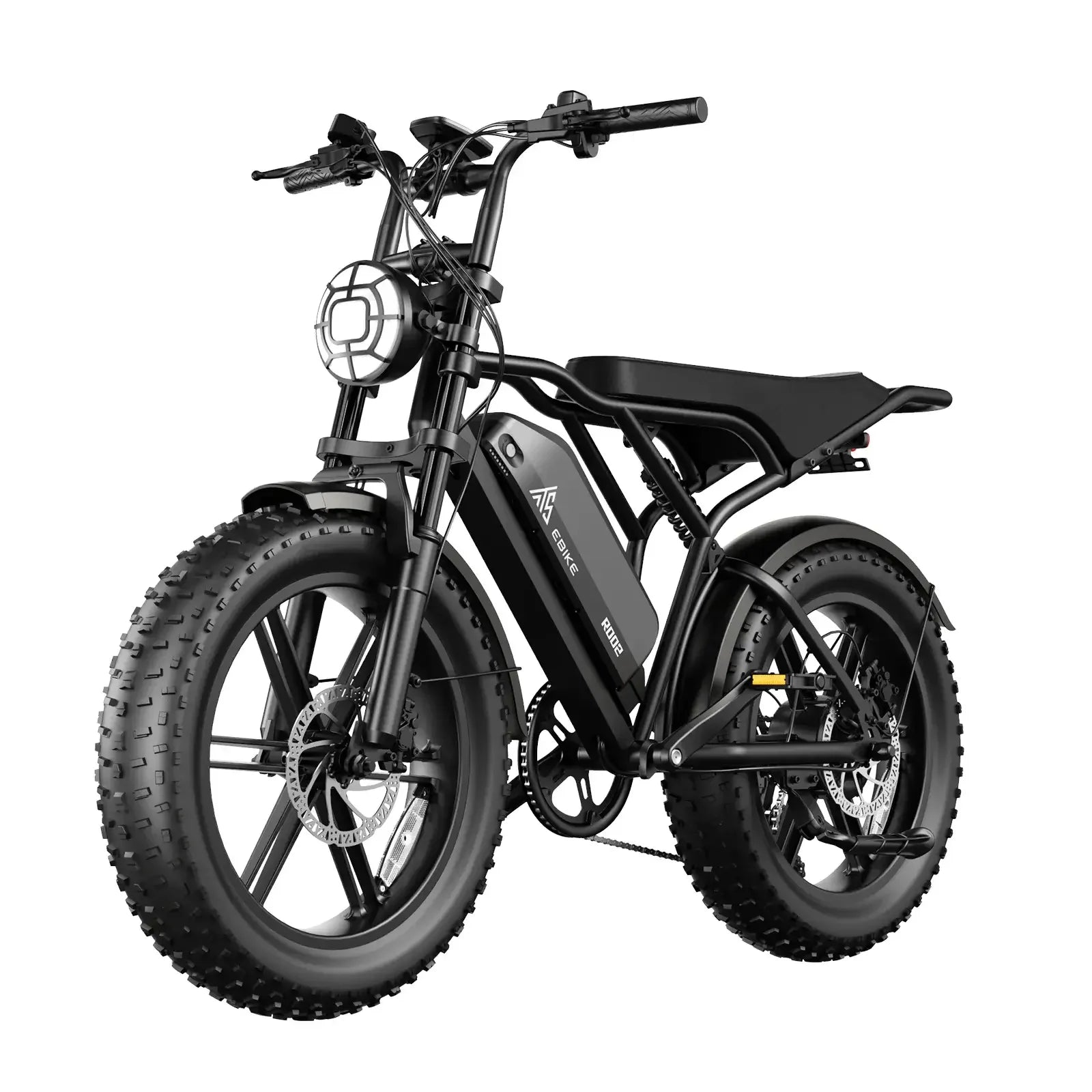

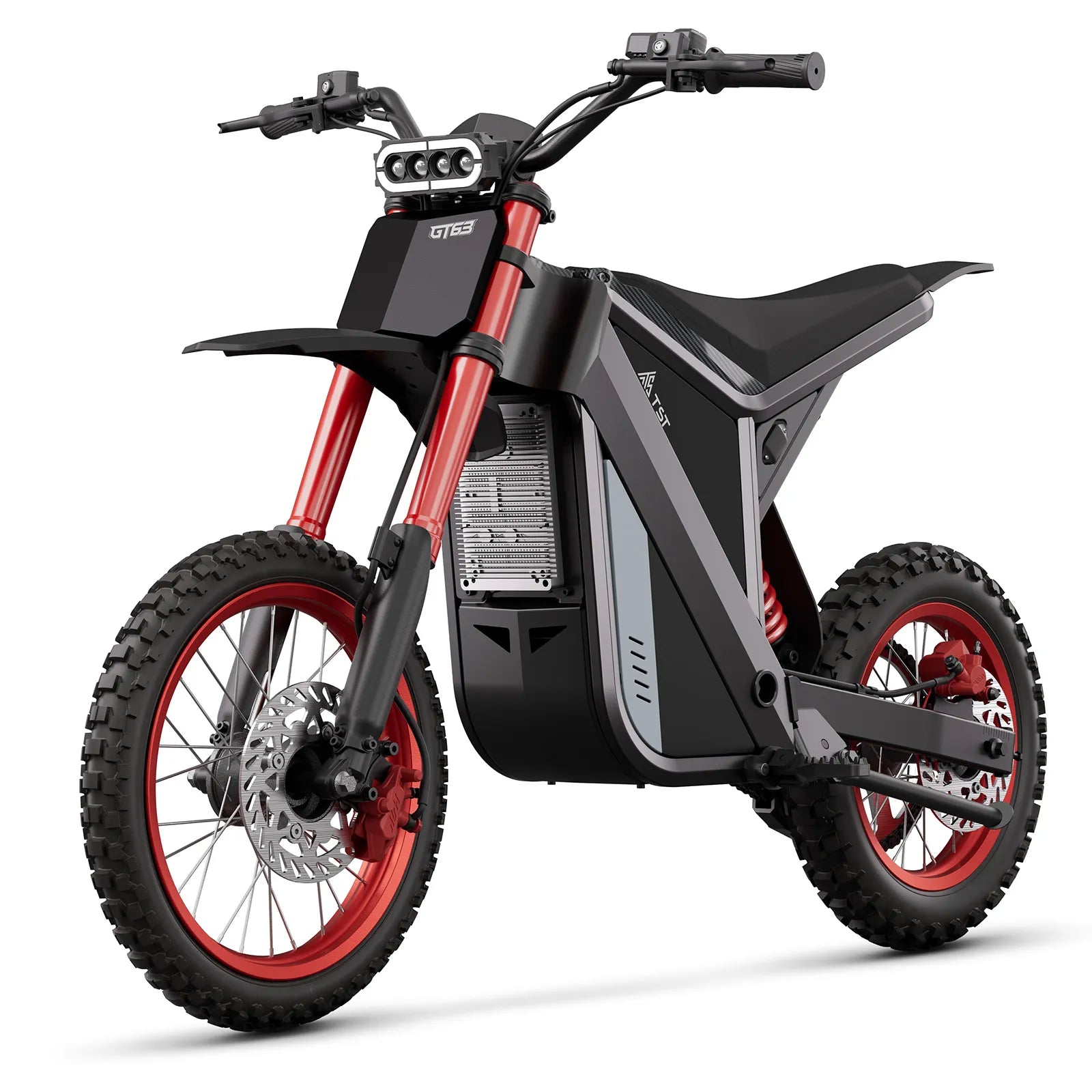
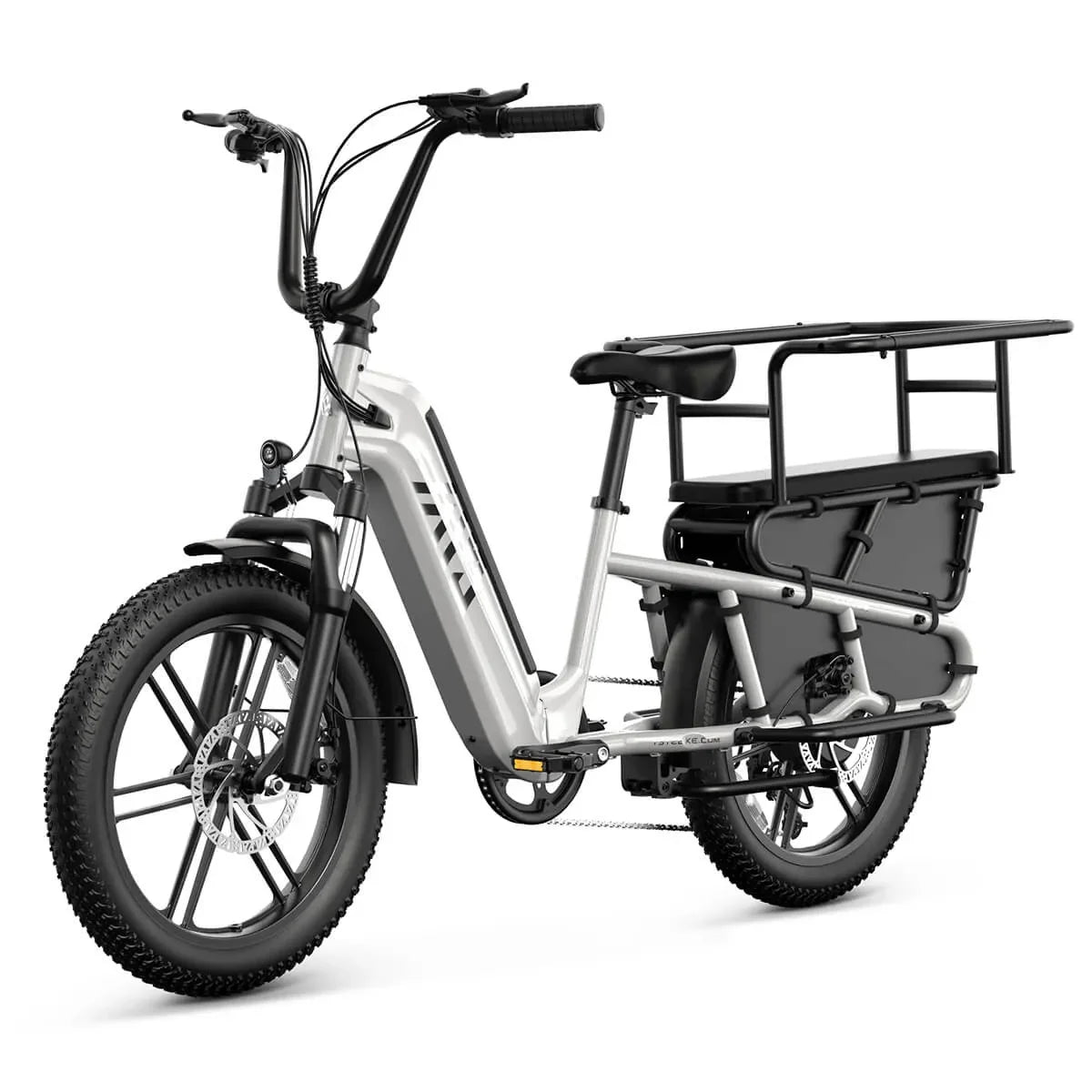
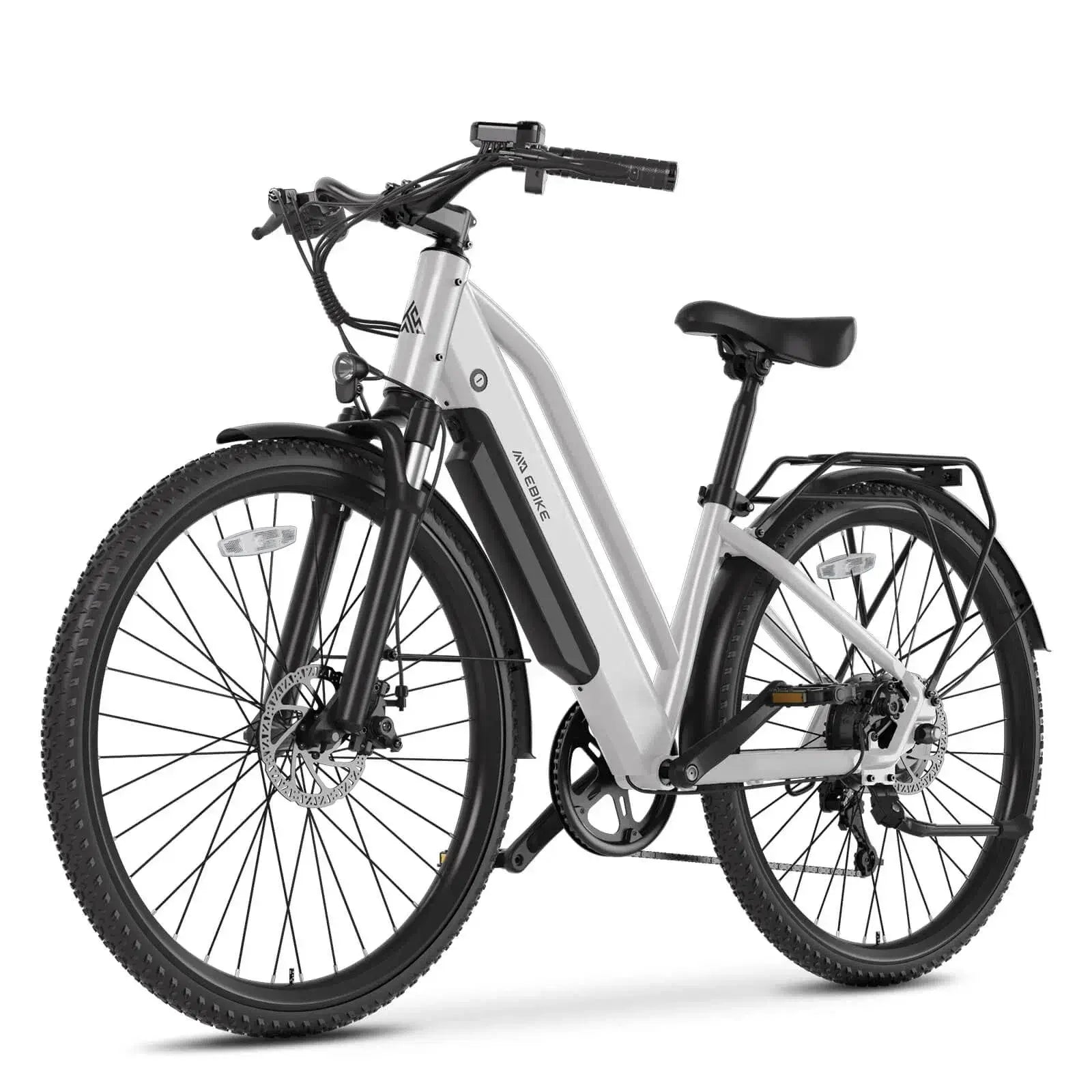
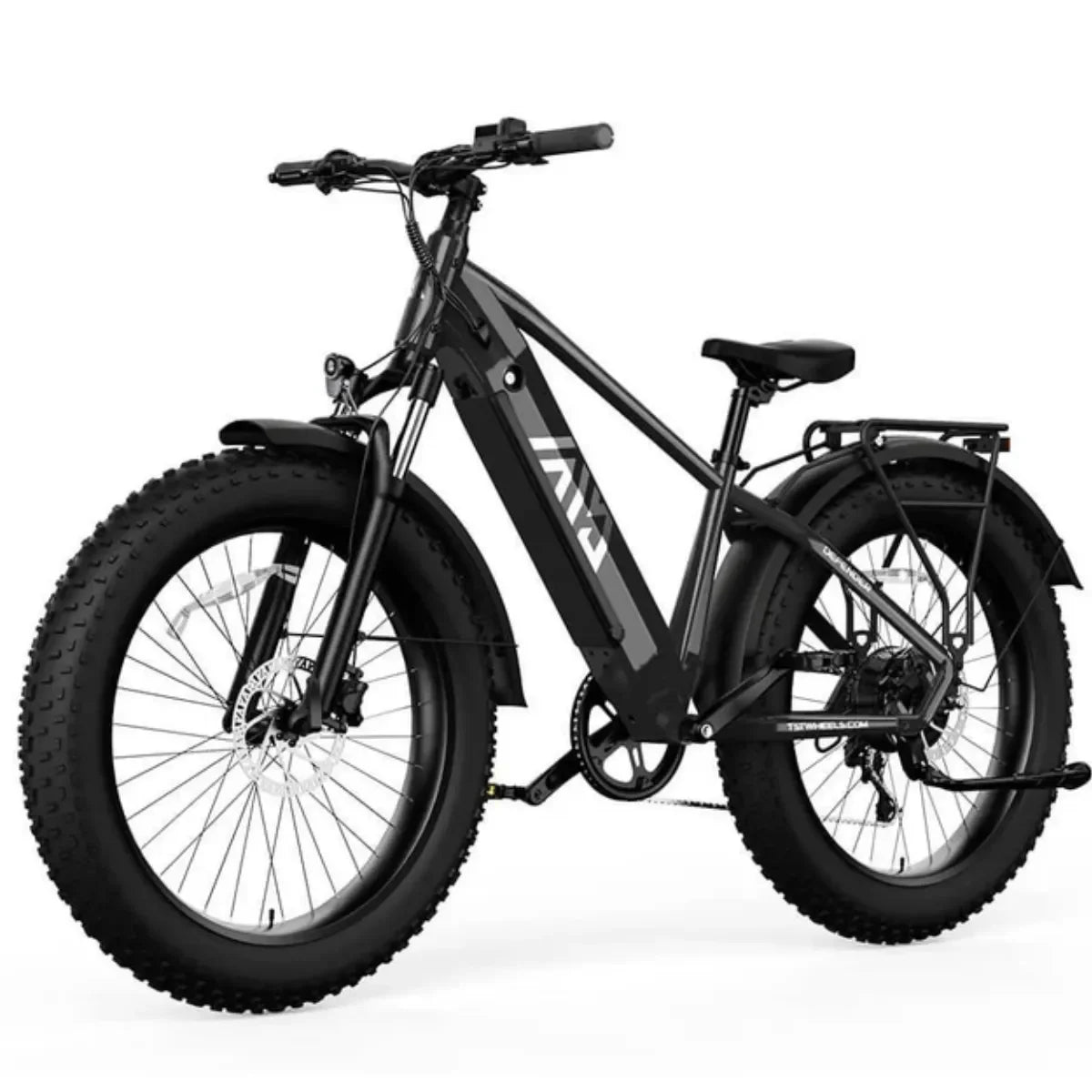
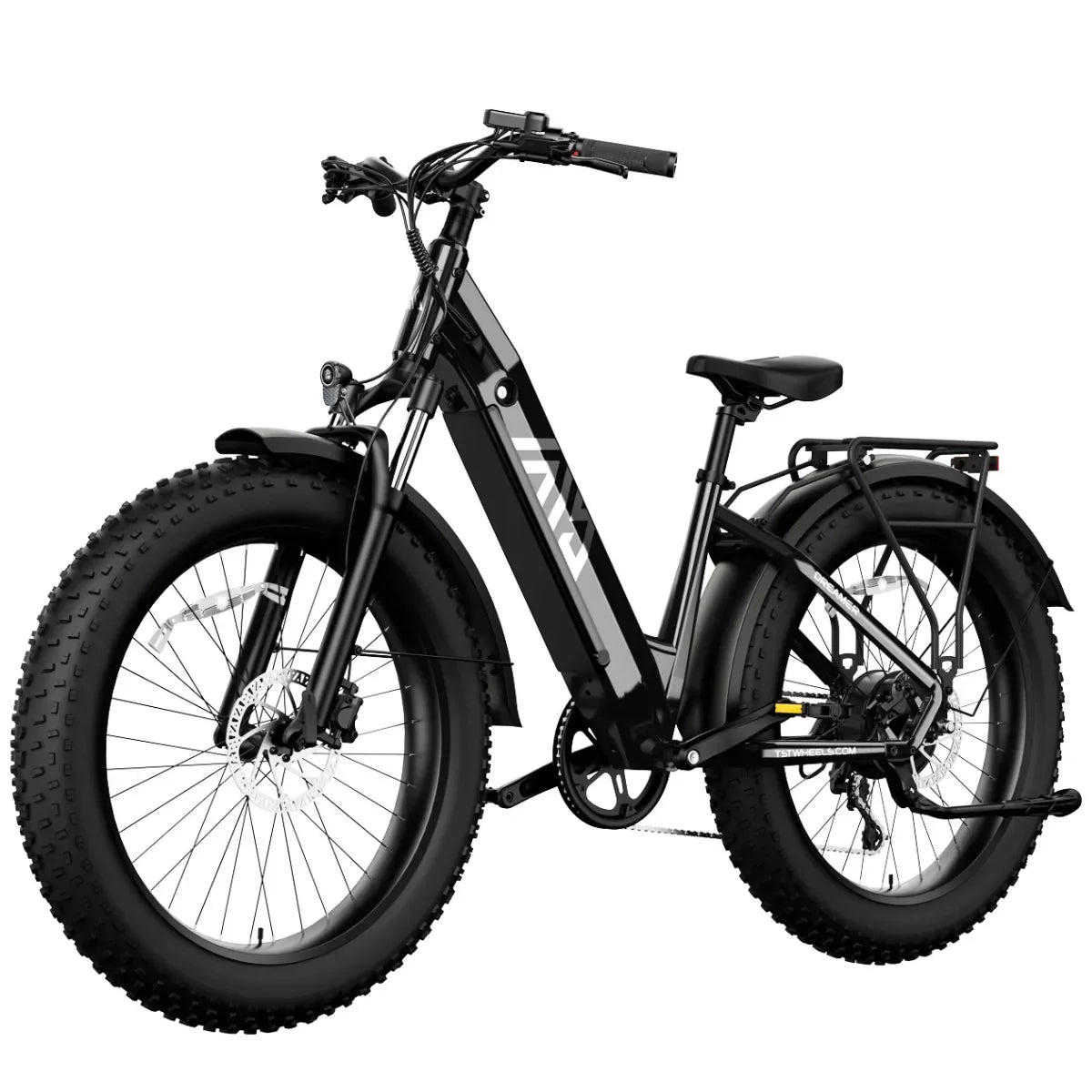

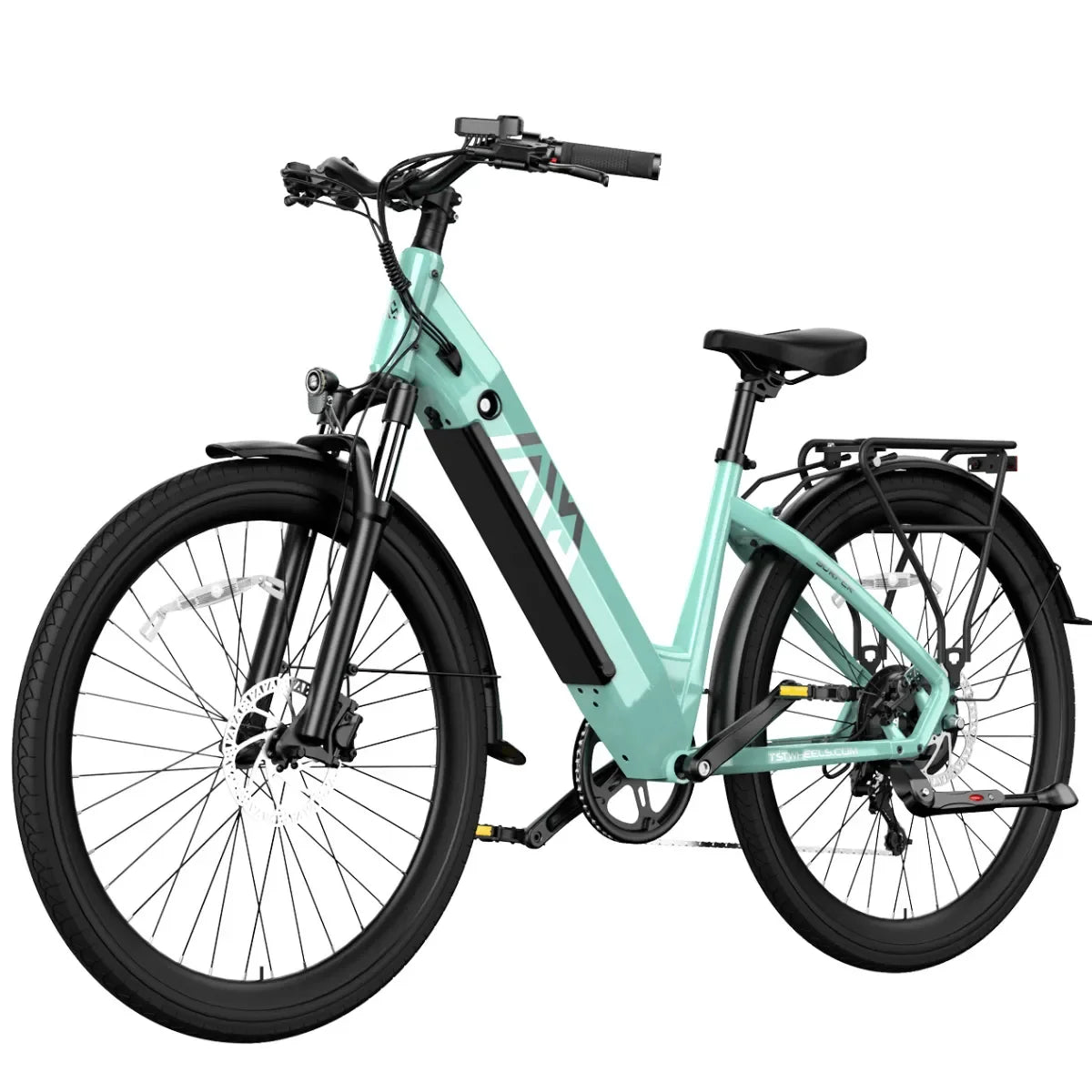
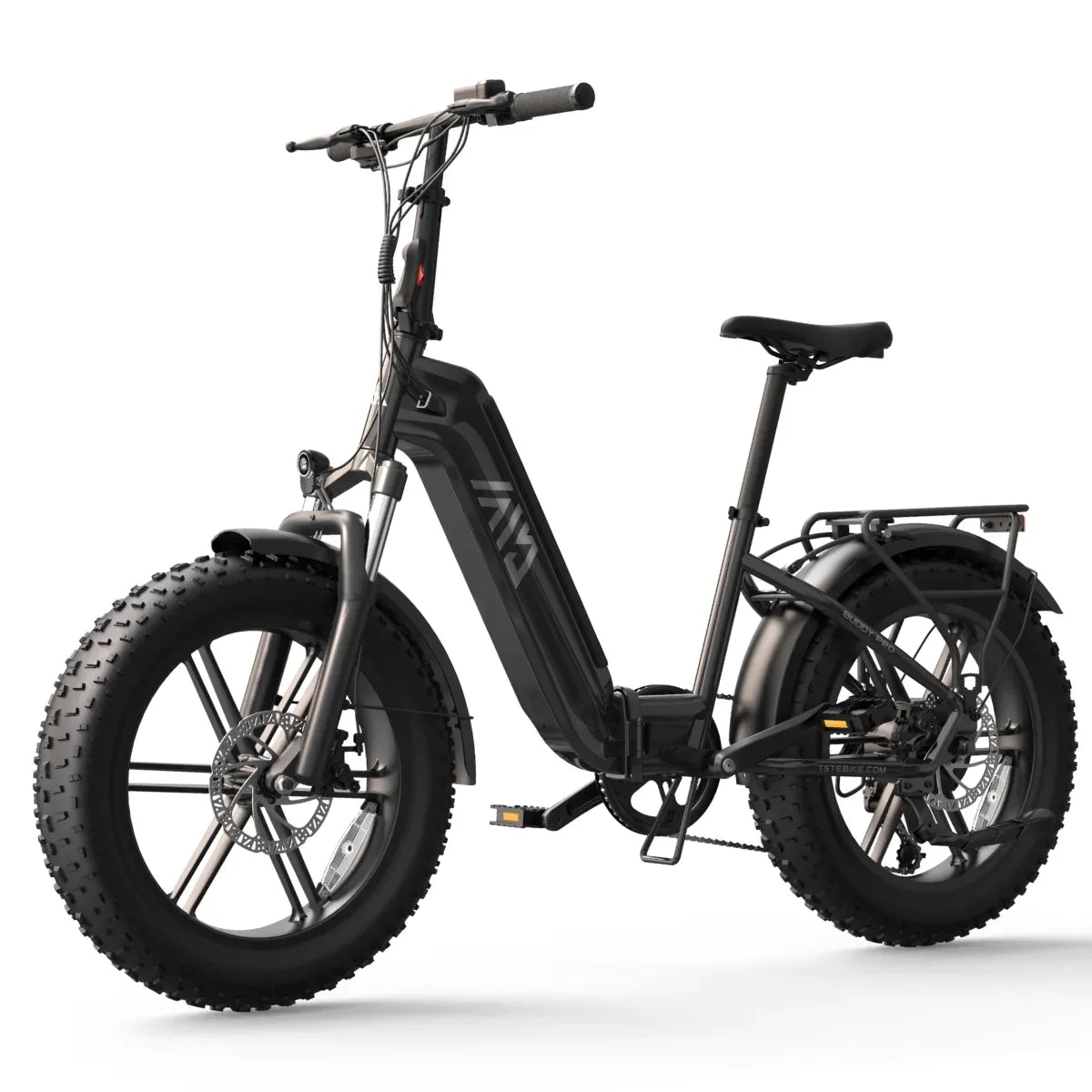
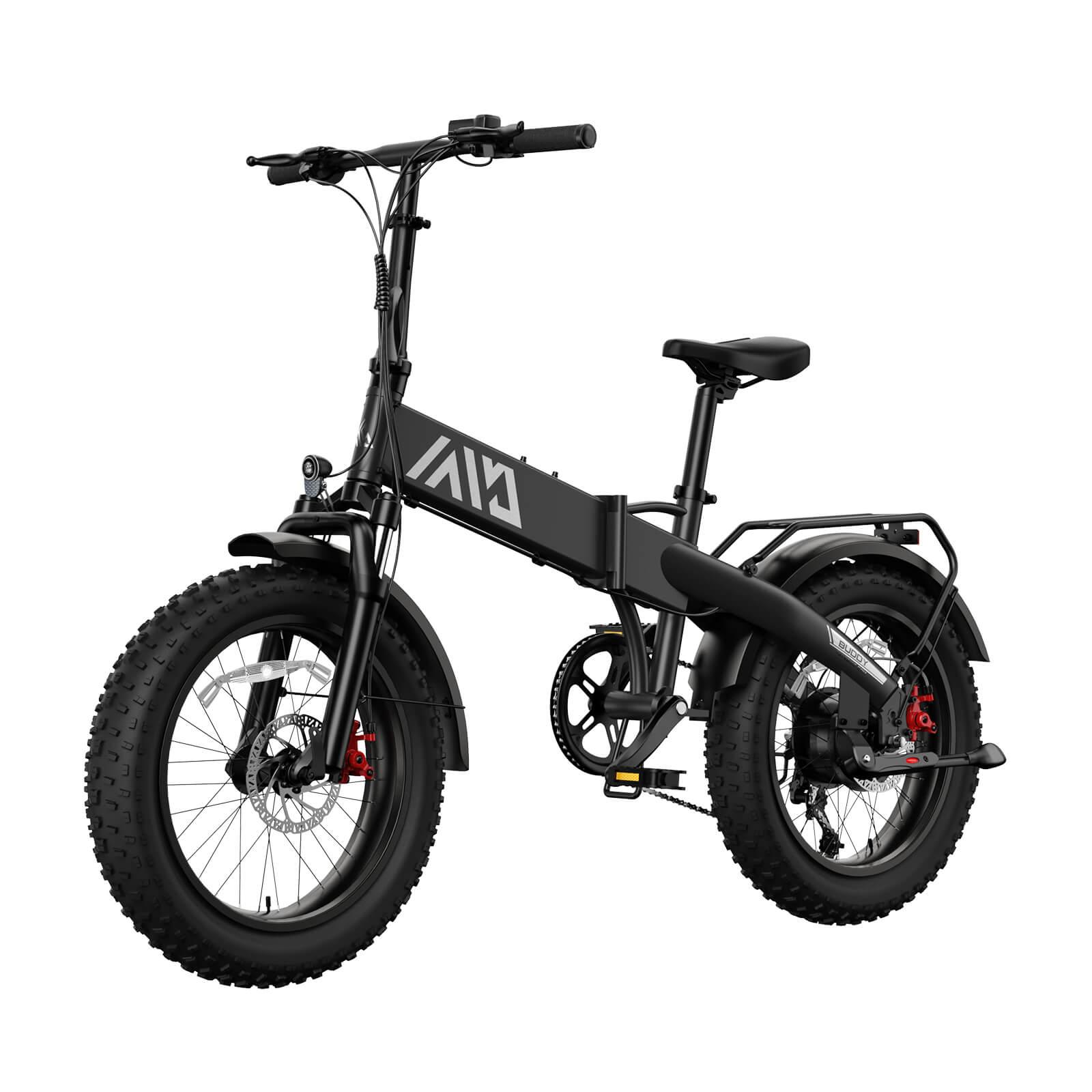
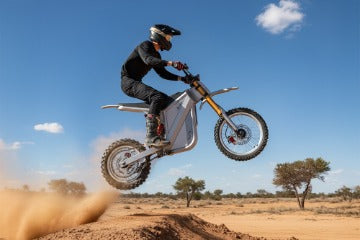
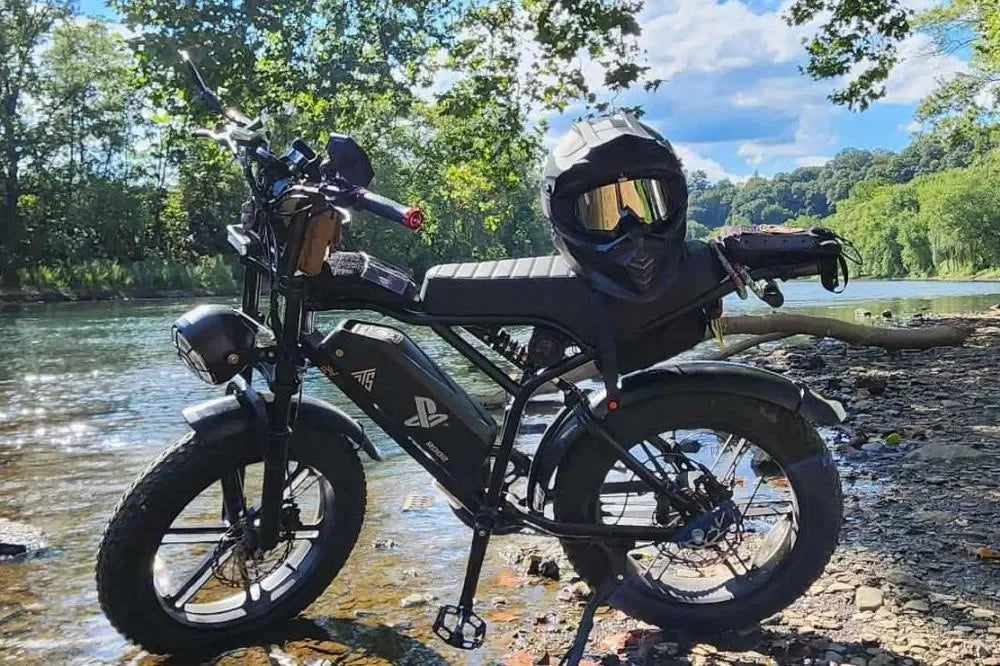
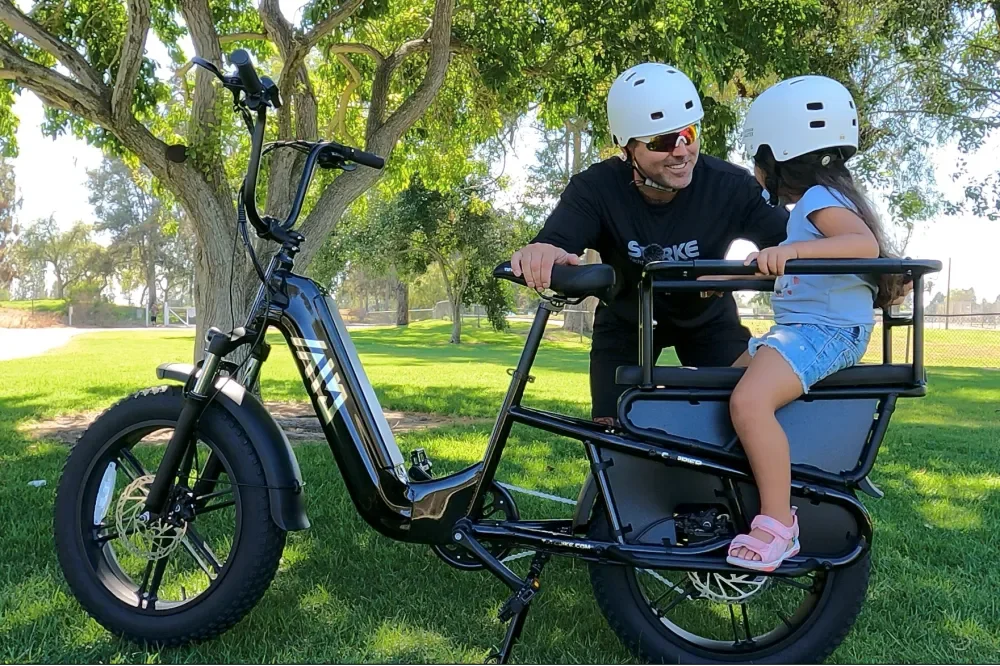
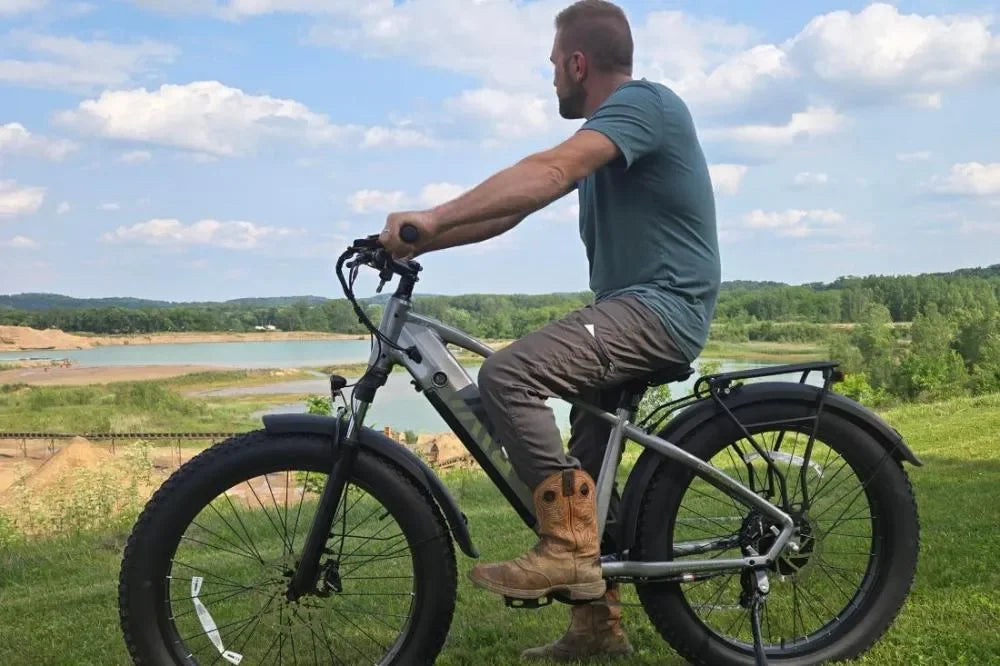
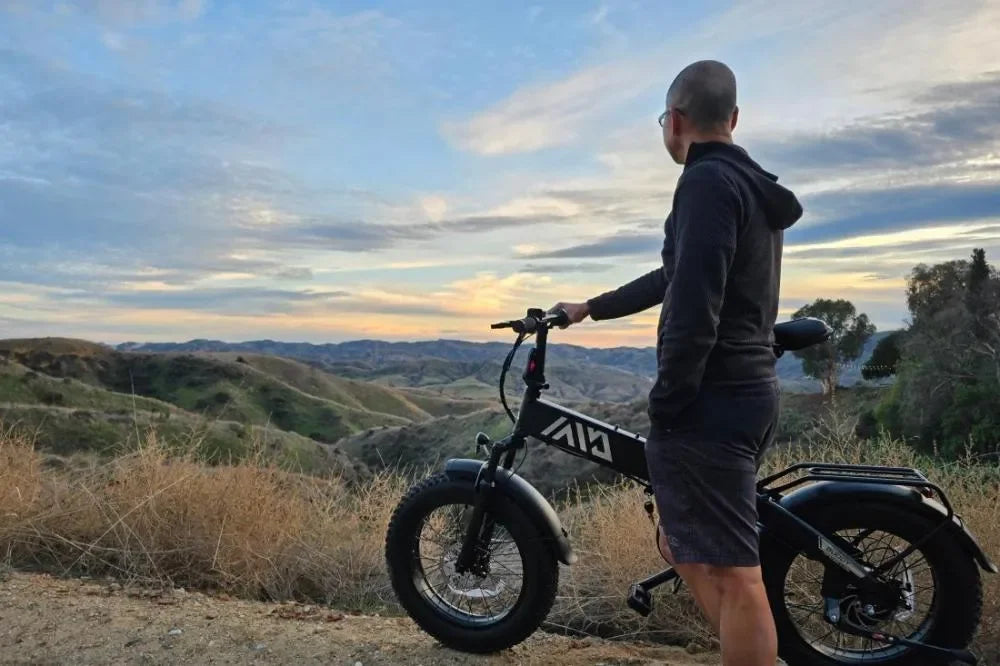
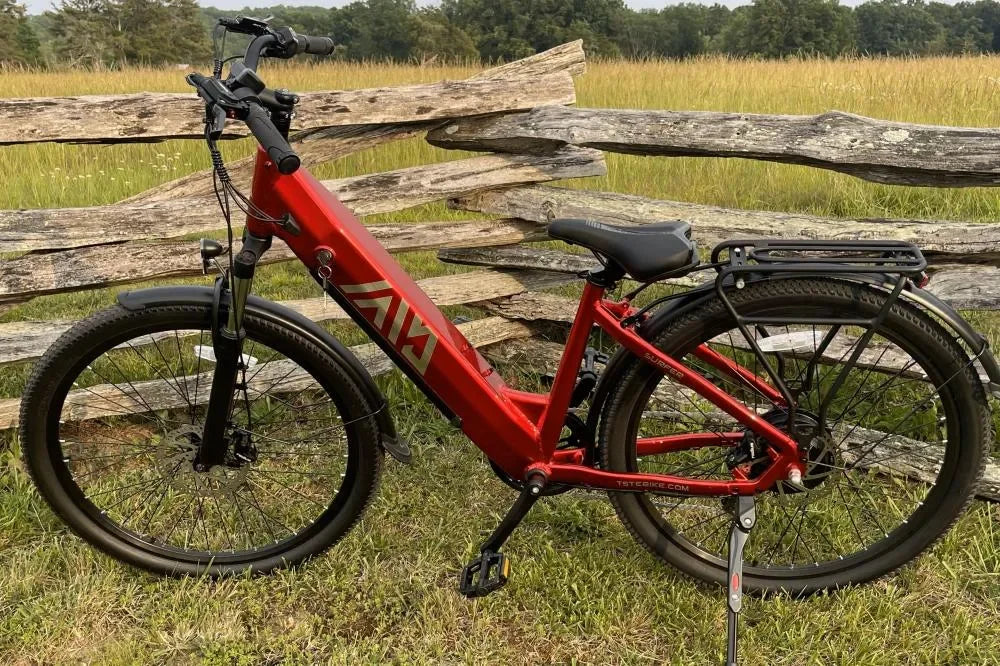
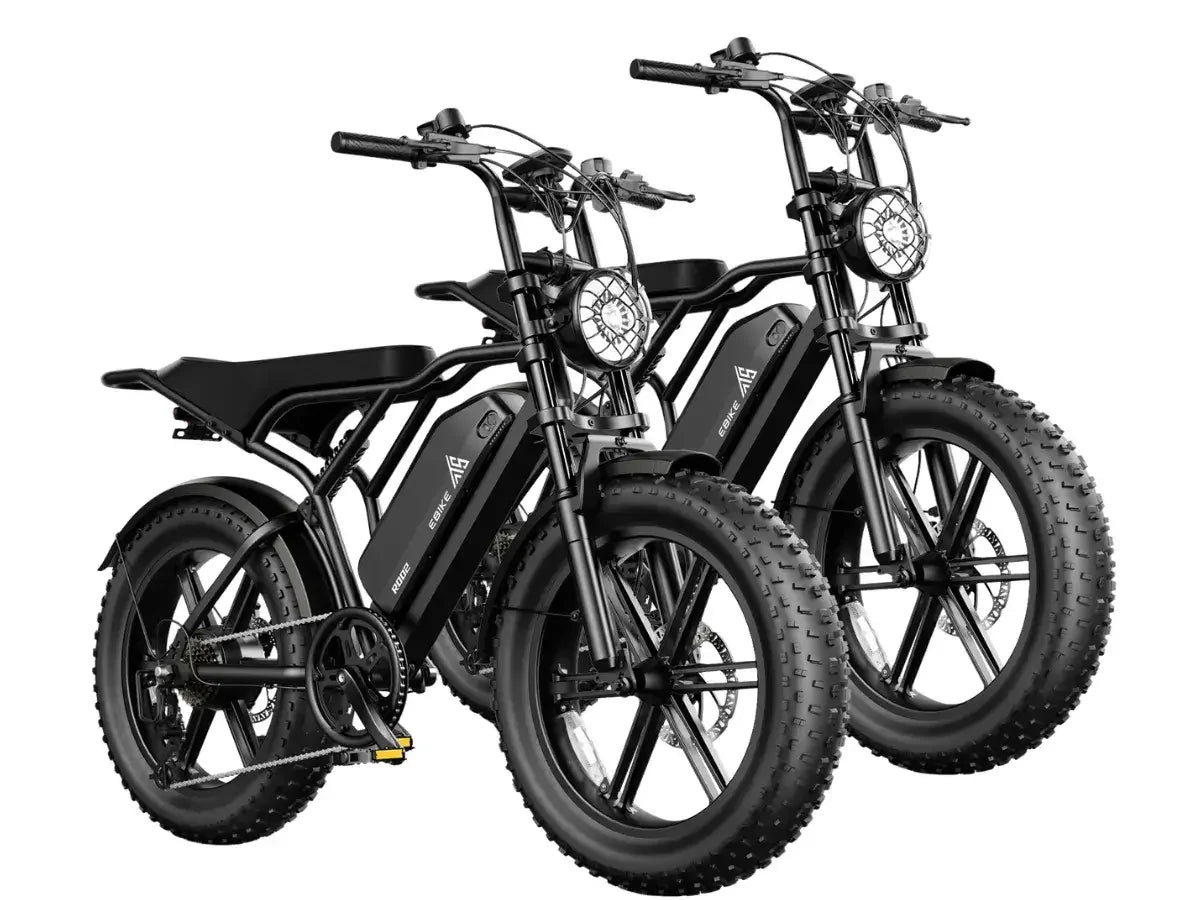
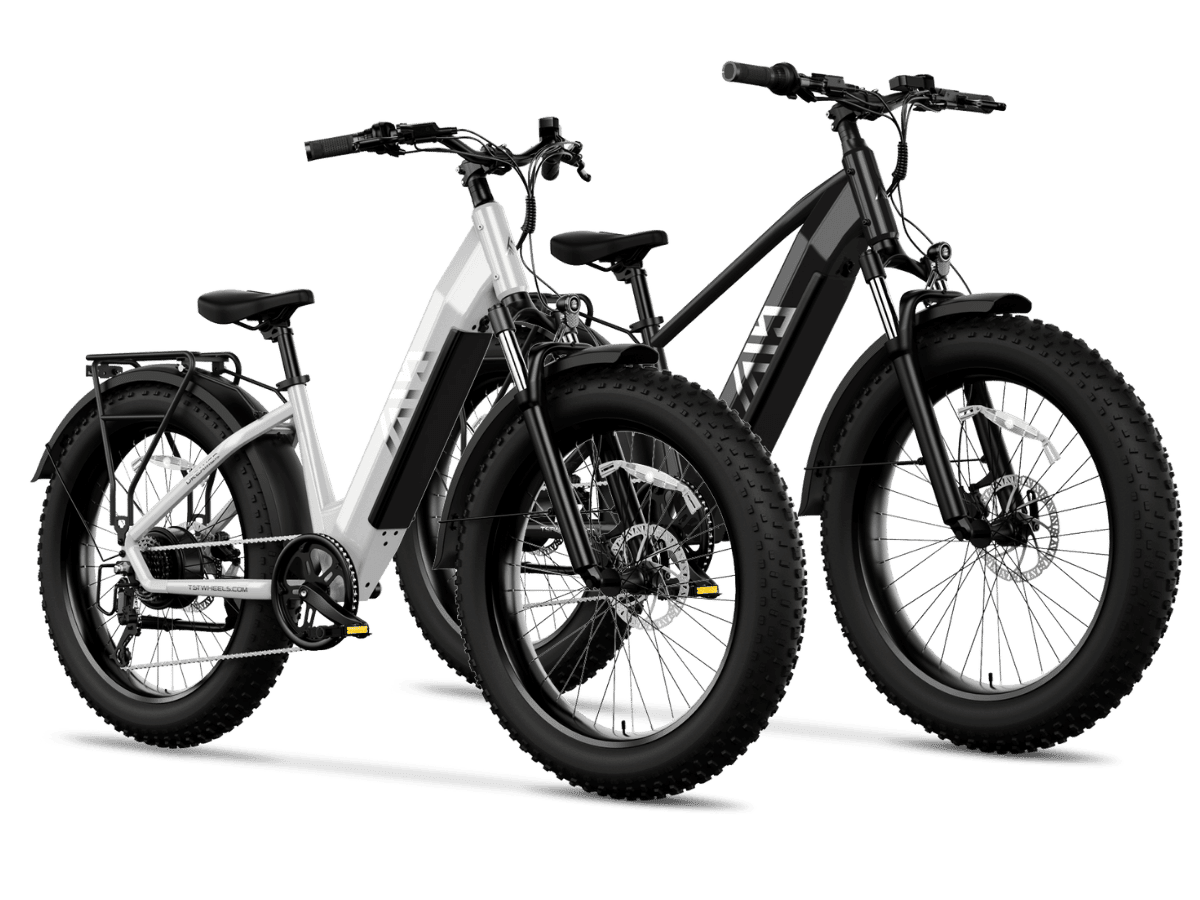
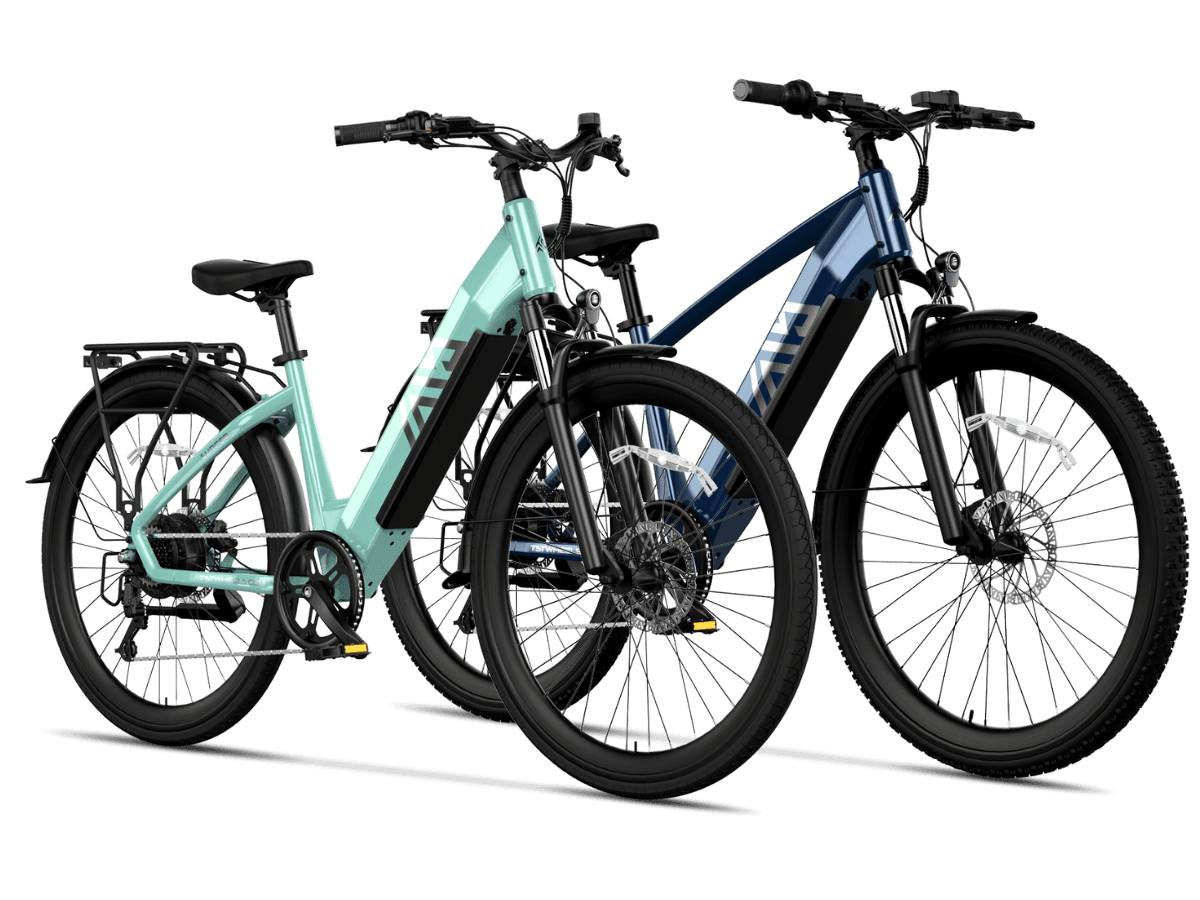
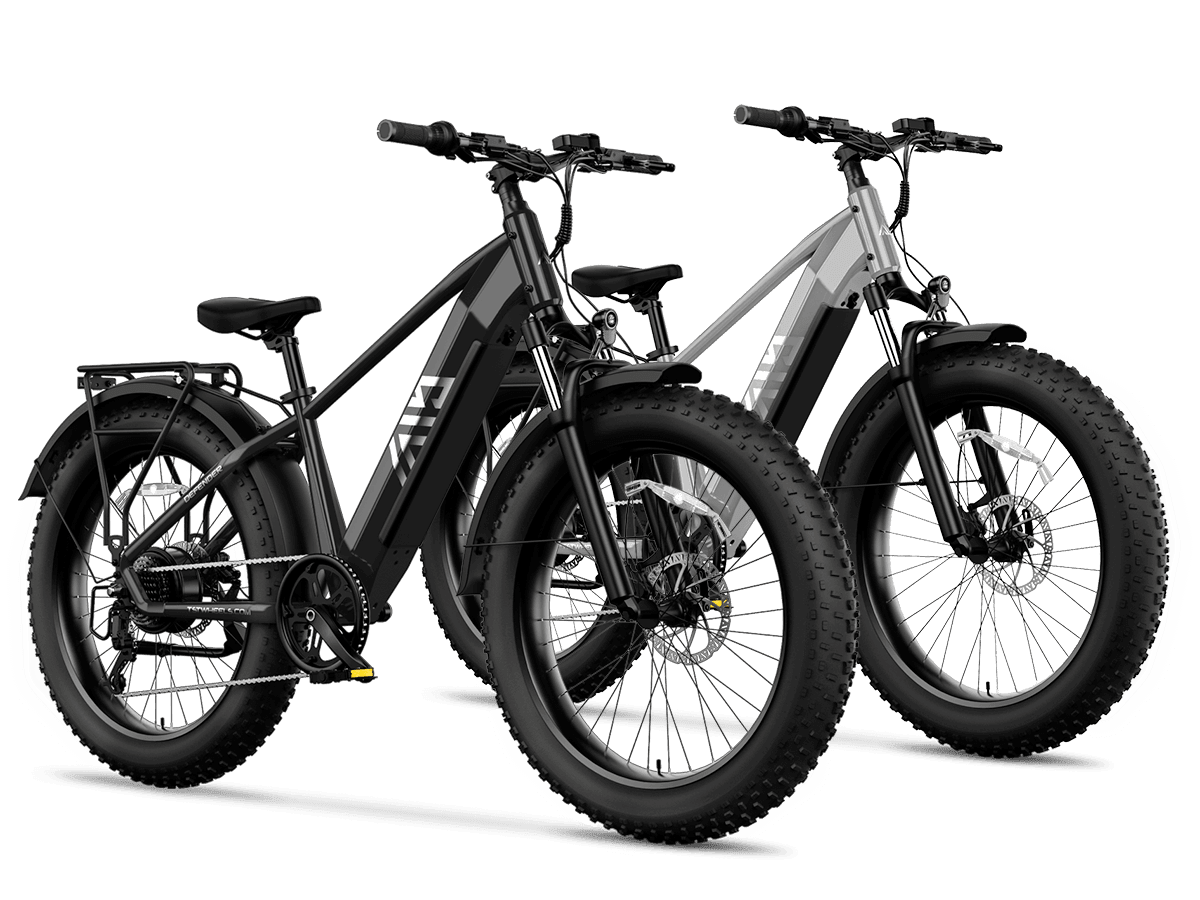
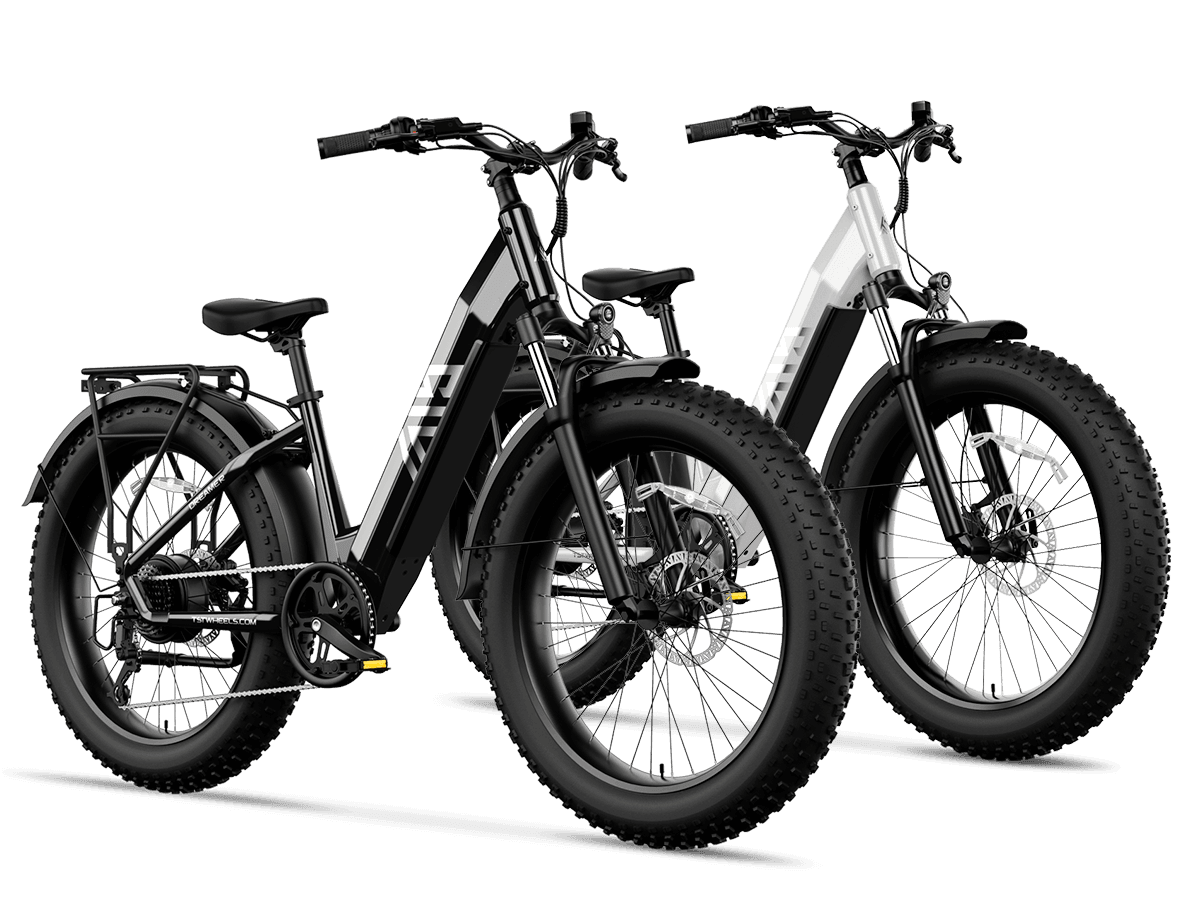
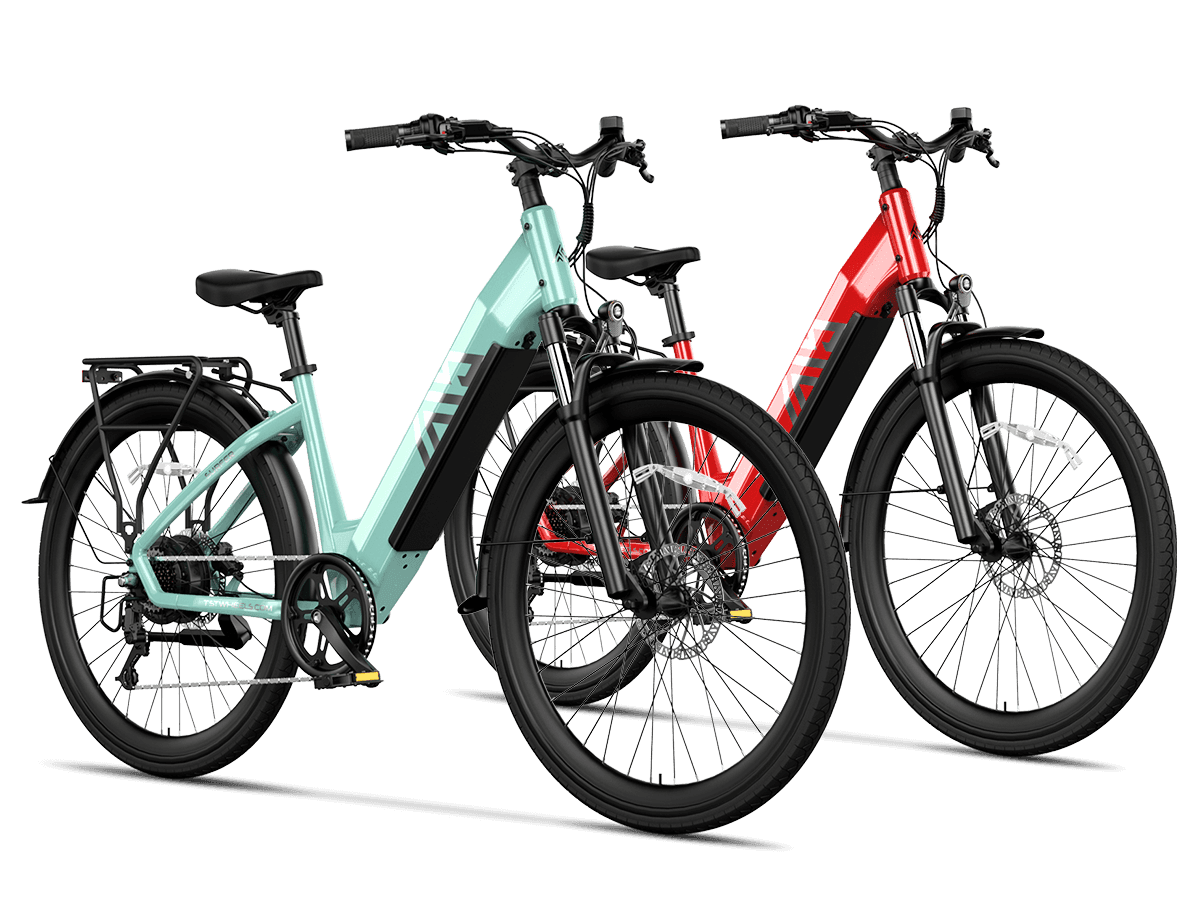
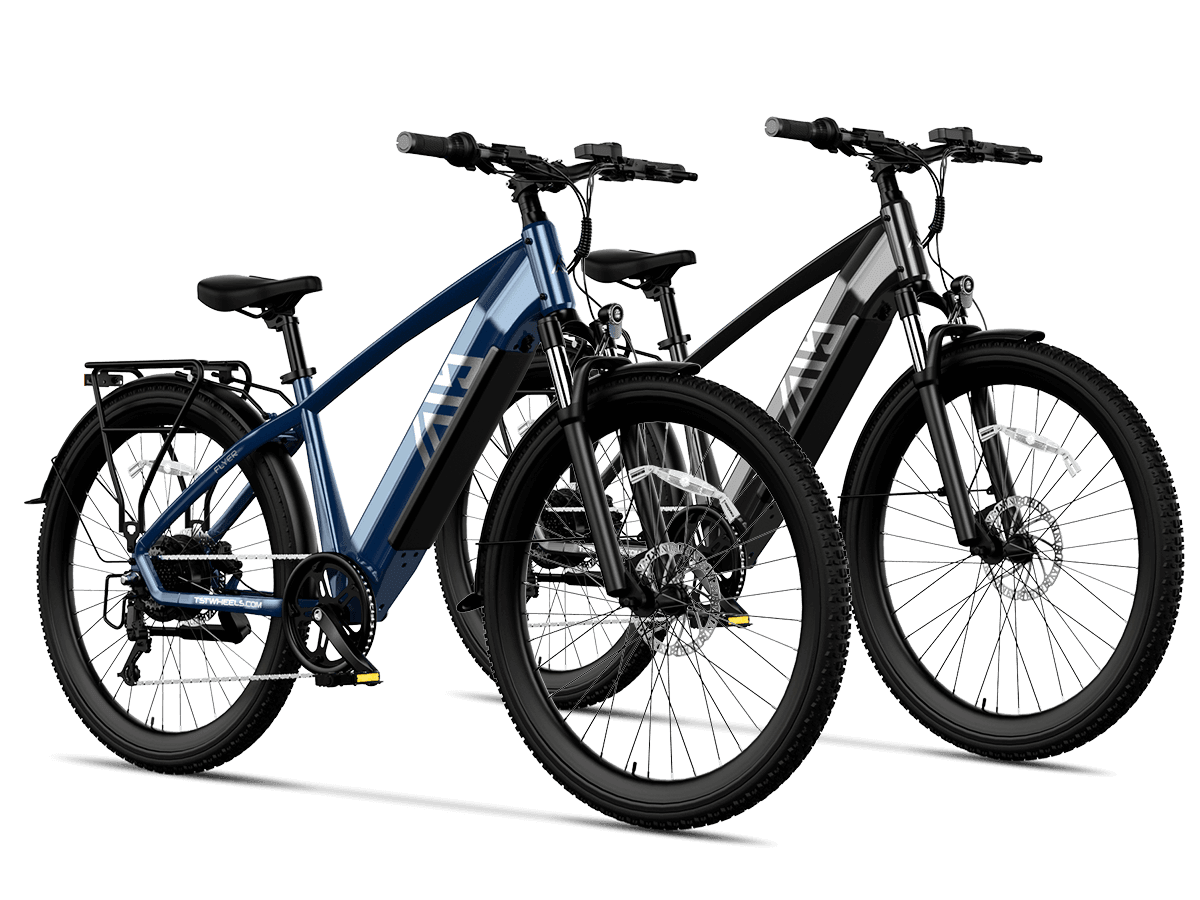
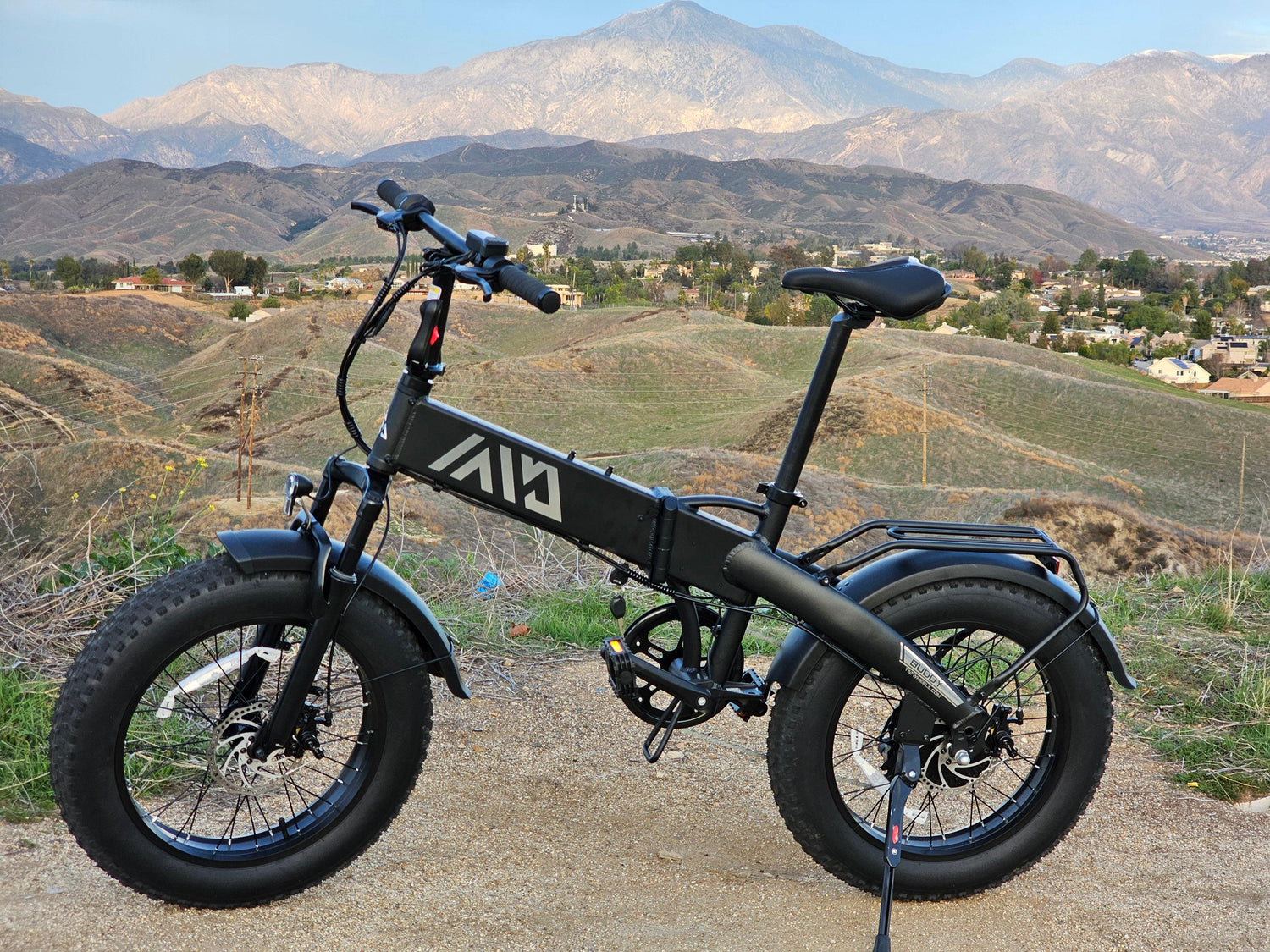
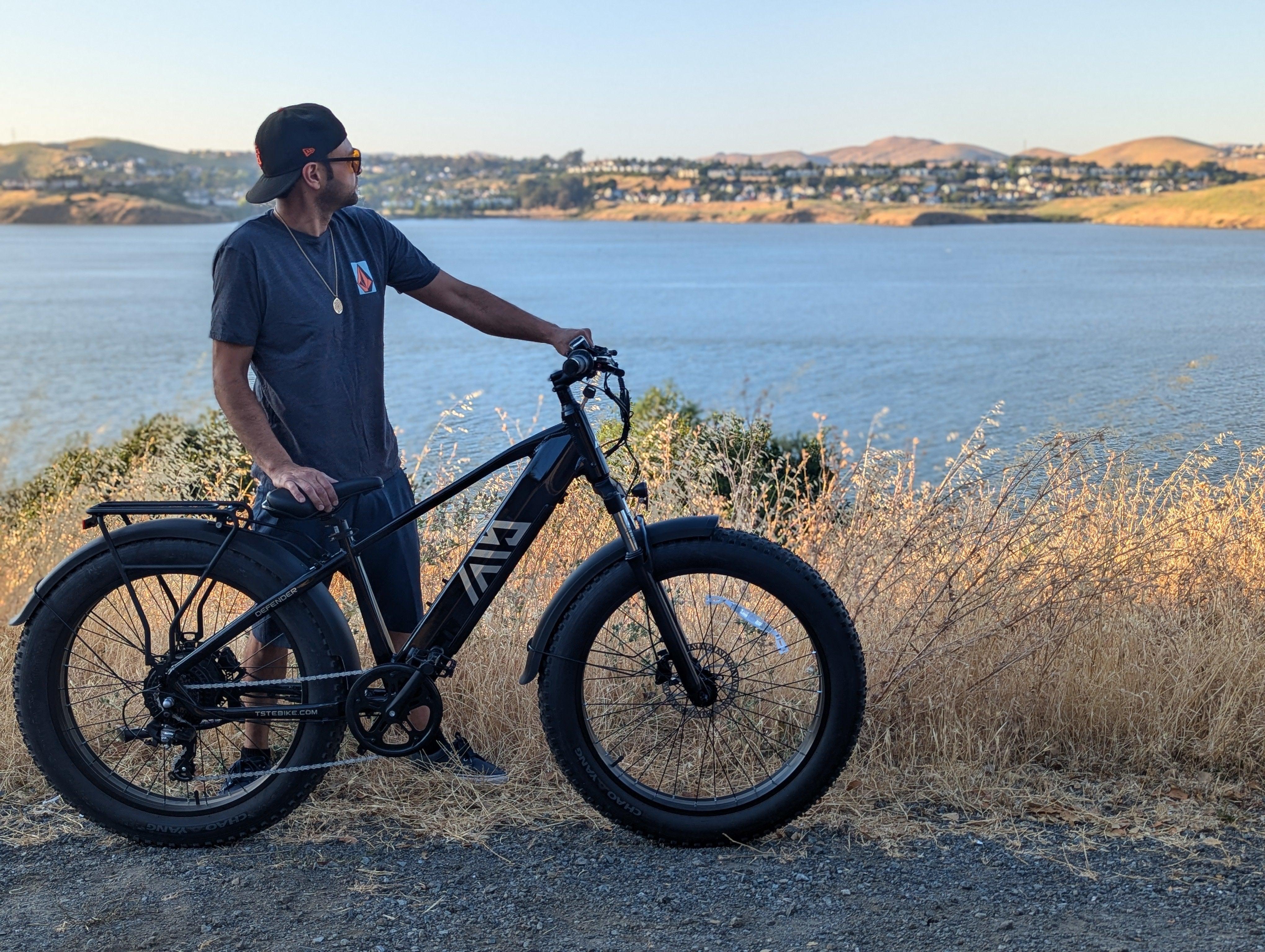

Leave a comment
All comments are moderated before being published.
This site is protected by hCaptcha and the hCaptcha Privacy Policy and Terms of Service apply.